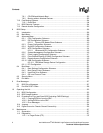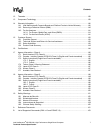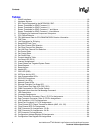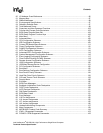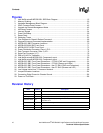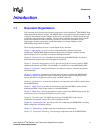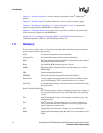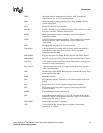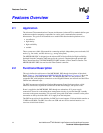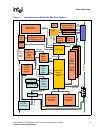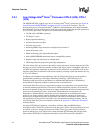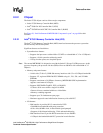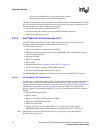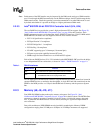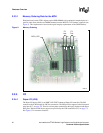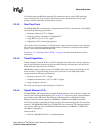
14 Intel NetStructure
®
MPCBL0001 High Performance Single Board Computer
Technical Product Specification
Features Overview
Features Overview 2
2.1 Application
The Advanced Telecommunications Compute Architecture (AdvancedTCA) standards define open
architecture modular computing components for carrier-grade, communications network
infrastructure. The goals of the standards are to enable blade-based modular platforms to be:
• cost effective
• high-density
• high-availability
• scalable
These systems use a fabric I/O network for connecting multiple, independent processor boards, I/O
nodes (e.g., line cards), and I/O devices (e.g., storage subsystem).
The MPCBL0001 SBC is designed per the AdvancedTCA Design Guide for High Availability,
Switched Network Computing. Bulk storage for the system is connected through optional dual
Fibre Channel interfaces. The MPCBL0001FXX SBC includes a Fibre Channel controller. The
MPCBL0001NXX SBC does not have the Fibre Channel controller.
2.2 Functional Description
This topic defines the architecture of the MPCBL0001 SBC through descriptions of functional
blocks. Figure 1, “Intel NetStructure® MPCBL0001 SBC Block Diagram” on page 15 shows the
functional blocks of the MPCBL0001 SBC. The MPCBL0001 SBC is a dual processor, hot-
swappable SBC with backplane connections to dual Gigabit Ethernet star networks and dual Fibre
Channel star arbitrated loops.
The SBC incorporates an Intelligent Platform Management Controller that monitors critical
functions of the board, responds to commands from the shelf manager, and reports events.
Power is supplied to the MPCBL0001 SBC through two redundant -48 V power supply
connections. Power for on-board hardware management circuitry is provided through a standby
converter on the power mezzanine. This converter, along with all the other converters on the power
mezzanine are fed by the diode OR'd -48 V supply from the backplane.
The SBC has provision for the addition of a PMC device and supports 32-bit and 64-bit transfers at
33 MHz and 66 MHz. The SBC also offers one USB and one service terminal interface. An
overview of each block follows.



